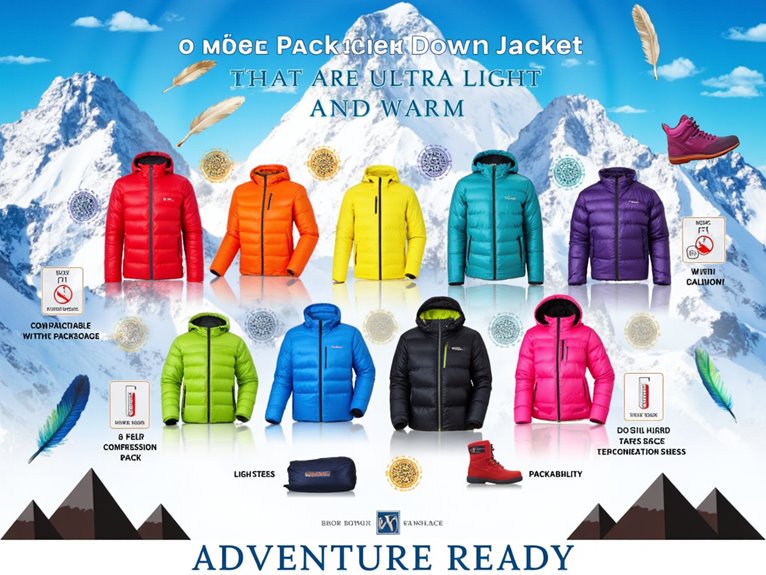Can I Wear Jeans Rafting?
Wearing jeans while rafting is not recommended. The heavy, water-absorbing fabric can become waterlogged, hindering safety and comfort on the water. Excess weight can lead to fatigue, decreased mobility, and increased risk of accidents. Not only can jeans cause chafing and discomfort, but they can also impede movement and response time in emergency situations. Instead, prioritize comfort, safety, and practicality by choosing quick-drying, breathable fabrics that allow for flexibility and airflow. By making an informed decision about what to wear, you can guarantee a safer and more enjoyable rafting experience – and discover the best alternatives to jeans.
We are supported by our audience. When you purchase through links on our site, we may earn an affiliate commission, at no extra cost for you. Learn more. Last update on 6th January 2026 / Images from Amazon Product Advertising API.
Why Jeans Are a Bad Idea
Denim jeans, a staple in many people's wardrobes, are a poor choice for rafting due to their heavy, water-absorbing fabric that can quickly become waterlogged, weighing you down in the water.
This excess weight can lead to fatigue, decreased mobility, and even increase the risk of accidents.
Additionally, denim provides limited flexibility, making it difficult to move freely and comfortably while steering the raft.
Furthermore, jeans can cause chafing and discomfort, especially when wet, which can distract from the overall rafting experience.
It's essential to prioritize comfort, safety, and practicality when choosing what to wear for rafting, making jeans a less-than-ideal option.
Water and Denim Don't Mix
Water's ability to penetrate denim's dense weave makes it a recipe for disaster on the rafting waters, as the heavy, saturated fabric can hinder your ability to respond quickly to changing river conditions.
When denim gets wet, it becomes cumbersome, weighing you down and restricting your movement. This can lead to a loss of control, making it difficult to maneuver in the raft or respond to emergency situations.
Additionally, waterlogged denim can also lead to hypothermia, as the cold water saps your body heat.
In addition, it's essential to prioritize your safety and comfort by choosing quick-drying, breathable fabrics that won't put you at risk on the water.
Cotton and Waterlogged Blues
In the context of rafting, cotton fabrics, including cotton-rich blends, pose a similar risk to denim, as they absorb and retain large amounts of water, leading to a heavy, cumbersome, and potentially hazardous situation.
This is because cotton is a natural fiber that absorbs water, causing the fabric to become weighed down and uncomfortable to wear.
When cotton fabrics get wet, they lose their insulating properties, making you colder and more prone to hypothermia.
Additionally, waterlogged cotton fabrics can restrict your movement, making it more difficult to swim or respond to emergency situations.
It's essential to choose fabrics that drain water quickly and dry fast to guarantee a safe and enjoyable rafting experience.
Safety Concerns on the Water
When running rapids, the added weight and restricted movement caused by waterlogged clothing can turn a minor incident into a serious safety concern.
This is particularly critical in situations where a swift response is necessary, such as when traversing through tight spaces or avoiding obstacles.
Waterlogged jeans can also impede your ability to swim or stay afloat, increasing the risk of drowning.
Additionally, the weight of the waterlogged fabric can cause you to sink, making it more challenging to recover from a swim.
It's essential to prioritize safety and consider the potential risks associated with wearing jeans while rafting.
Better Alternatives for Rafting
Three key factors to consider when selecting an alternative to jeans for rafting are breathability, quick-drying properties, and flexibility.
You want fabrics that allow for airflow, dry rapidly, and move with you as you navigate the water.
Nylon, polyester, or merino wool-based clothing are excellent options. These materials wick moisture, dry quickly, and provide a full range of motion.
Avoid cotton, as it absorbs water, becomes heavy, and restricts movement.
Consider water-specific clothing, such as board shorts or river shorts, designed for aquatic activities.
These alternatives provide comfort, mobility, and safety while rafting.

